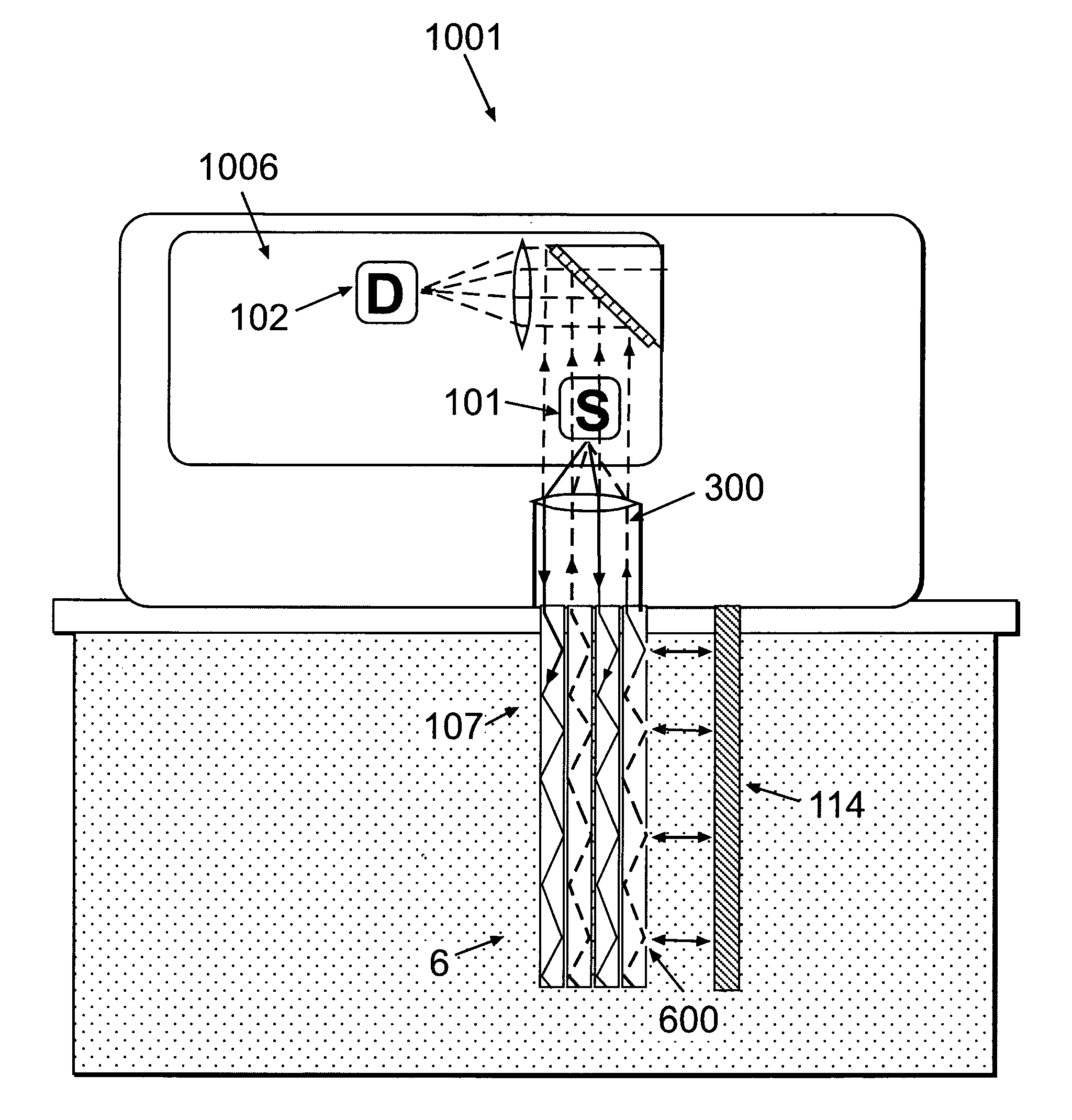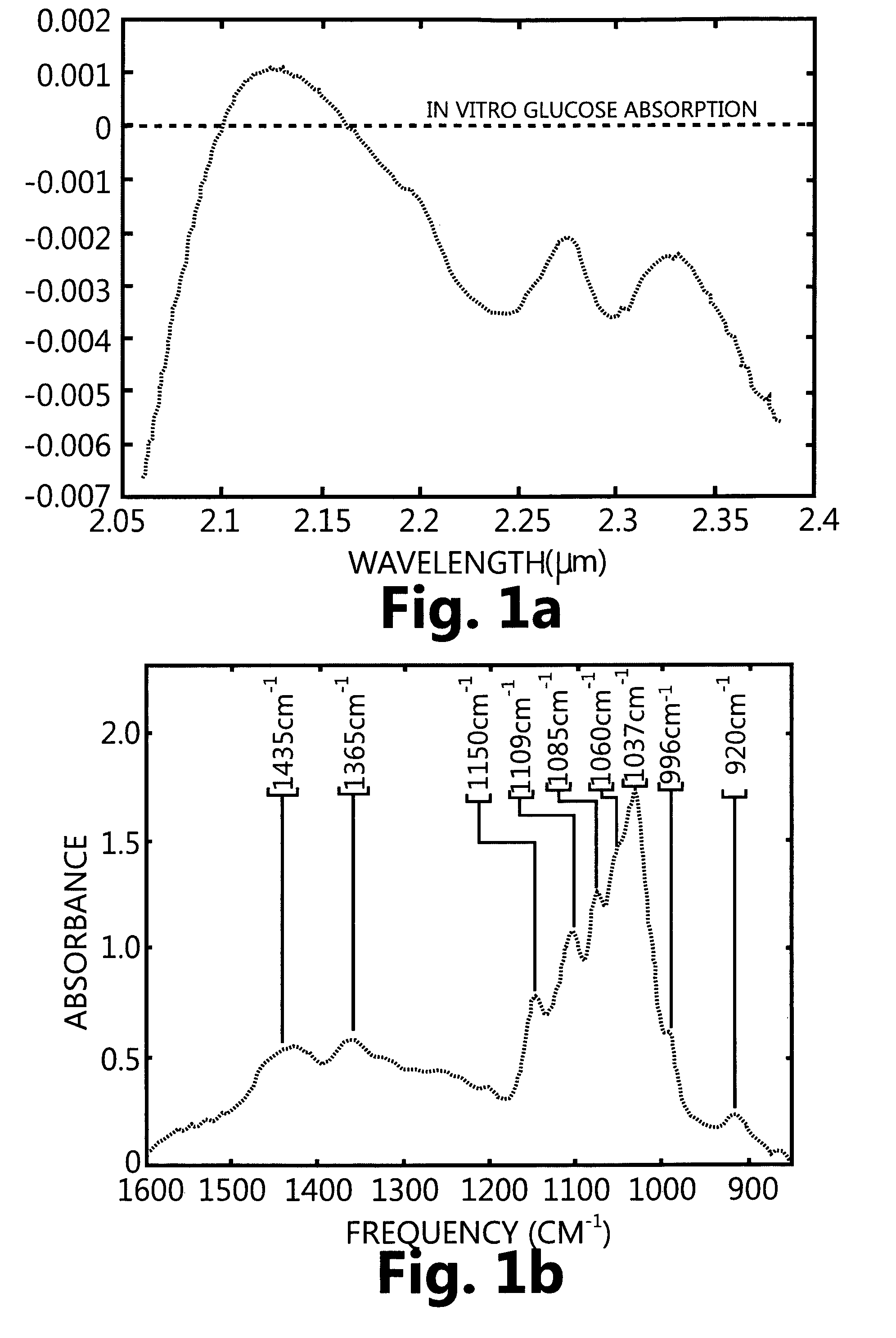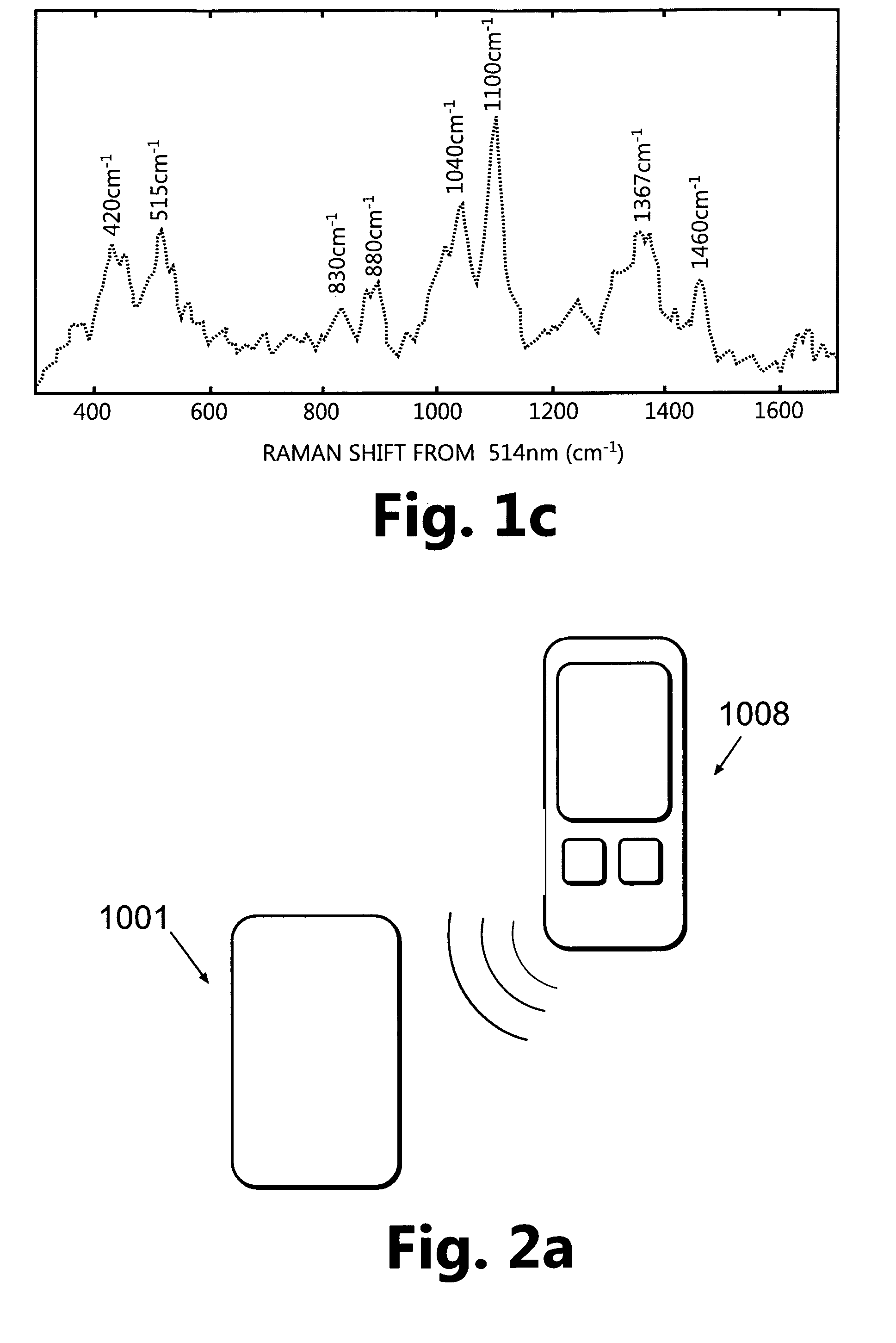Hypodermic optical monitoring of bodily analyte
a technology of optical monitoring and bodily analyte, which is applied in the field of hyperodermic optical monitoring of bodily analyte, can solve the problems of increasing the burden on patients and health care resources, increasing the rate of coronary heart disease, peripheral vascular disease and stroke, and difficult to achieve near-normal glucose concentrations in many patients, so as to avoid repeated skin pricking and high cost-effective
- Summary
- Abstract
- Description
- Claims
- Application Information
AI Technical Summary
Benefits of technology
Problems solved by technology
Method used
Image
Examples
Embodiment Construction
[0126]FIG. 1a shows optical absorption spectra of glucose in the NIR region for aqueous glucose after water subtraction as shown in the Journal of Biomedical Optics 5 (1), 5-16 Jan. 2000.
[0127]FIG. 2a shows a monitoring device composed of a patch unit (1001) and a remote control unit (1008). In accordance with one embodiment, the patch unit (1001) may be composed of a single part (FIG. 2b) or two parts (FIG. 2c): a reusable part (1) and a detachable disposable part (2), wherein each part is enclosed in its own housing. The patch unit (1001) can be programmed by the remote control unit (1008) or by the use of manual buttons (not shown) provided on the patch unit (1001).
[0128]FIGS. 3a-d show embodiments for connecting the patch unit (1001) to the user's skin (5). FIGS. 3a-b show embodiments of the patch unit (1001) that can be comprised of a single part (FIG. 3a) or two parts (FIG. 3b): a reusable (1) and a disposable part (2). The patch unit (1001) can be connected to and disconnecte...
PUM
 Login to View More
Login to View More Abstract
Description
Claims
Application Information
 Login to View More
Login to View More - R&D
- Intellectual Property
- Life Sciences
- Materials
- Tech Scout
- Unparalleled Data Quality
- Higher Quality Content
- 60% Fewer Hallucinations
Browse by: Latest US Patents, China's latest patents, Technical Efficacy Thesaurus, Application Domain, Technology Topic, Popular Technical Reports.
© 2025 PatSnap. All rights reserved.Legal|Privacy policy|Modern Slavery Act Transparency Statement|Sitemap|About US| Contact US: help@patsnap.com



